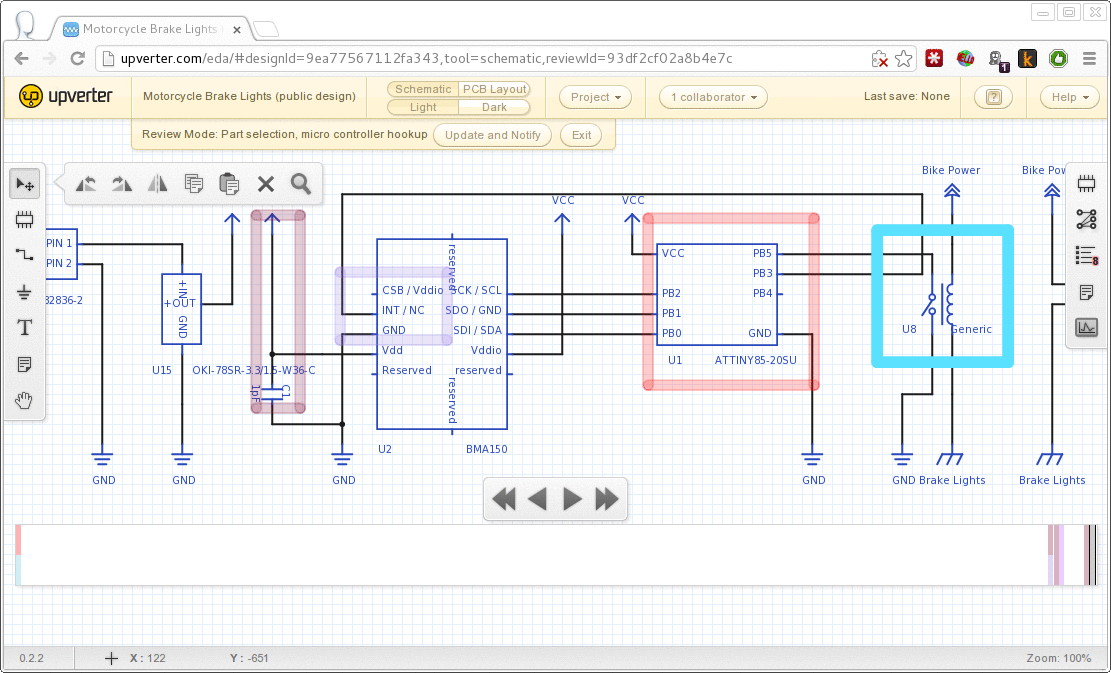Design Review in Upverter
Starting a New Review
Reviews are created through the project menu in the tool.

Project menu options
When creating a new review, it’s important to pick a title and description that communicates the purpose and scope of the review.

Create design review dialog
There are two permission options available when creating a review.
Inherit permission of the design: Editors of the design will be able to add notes and make comments. Viewers will be able to see the notes and comments made but cannot make changes of their own. (see publicly visible design reviews on Upverter)
Community reviewable: The design will be submitted to the community for public review. Any member of the Upverter community can make notes and comment on the review. They will be unable to edit the design, however, unless given explicit permissions. (see open community reviewable designs on Upverter)
When creating a review, you may find it helpful to create an initial set of notes to call out specific things that you would like feedback on.
Making Notes and Comments
Marking up the review is done with notes. Notes are drawn as colorful outlines and arrows.

Note options
Once a note is added, comments can be made on it by hovering over the outline and clicking on the thread button, or double-clicking on the outline.

Adding a note
The first comment in the note thread serves as the “topic” for the note. This title is used to help identify the note in the “Notes list” tray in the right hand toolbar.

Creating a thread

The notes list
Updating the Review and Notifying Collaborators
After making a set of notes, you’re ready to notify the other collaborators of the changes to the review.

Review controls
These comments help the other collaborators figure out what has changed at a high level. It is also a chance to communicate action items that apply to the design as a whole.

The review thread

Conversation on the review thread
Making Changes
The design can be edited with the review overlaid. This is helpful when going through the comments made by a reviewer and fixing them one at a time. As you address the comments made by the reviewers, you can mark the notes as “done”. Notes marked as done become translucent, so it’s easy to see what issues still need to be addressed.

Marking notes as “done”
Notes marked as done also move to the bottom of the notes list.

Notes marked as “done” in the notes list
Closing the Review
Once all of the issues in a review have been addressed, it’s good form for the reviewers to “sign off” on the review in some way. This signifies to the reviewee that all of the issues have been taken care of and it’s okay to close the review.

LGTM (Looks Good To Me) is a convention from software code reviews
 Sign In
Sign In
